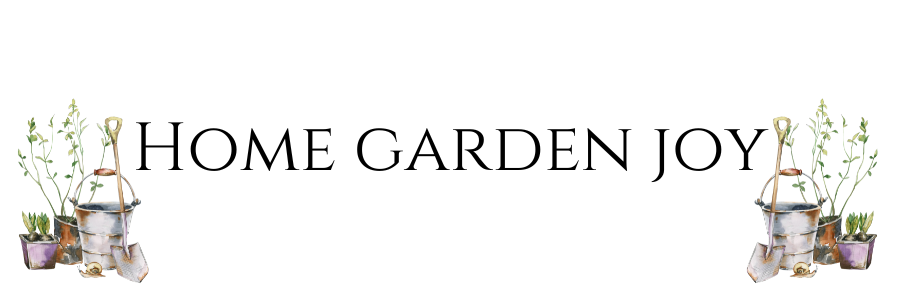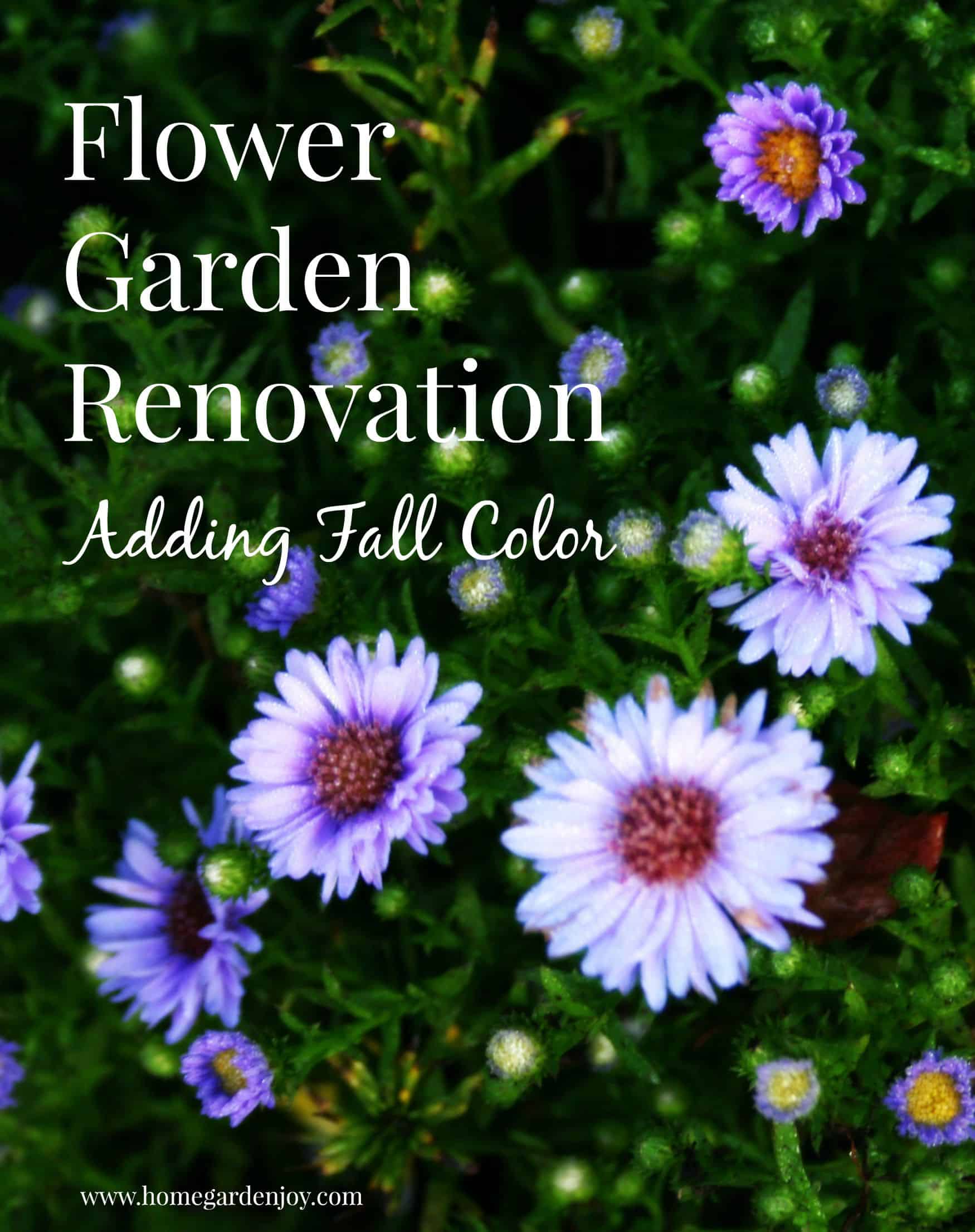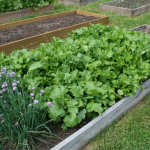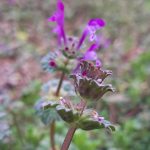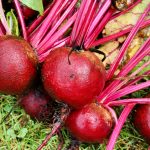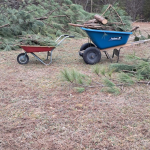This past weekend, I decided not to wait until spring to renovate the perennial garden. The flower garden renovation included removing crabgrass and weeds, digging up invasive plants, and replacing them with fall-blooming asters.
Flower Garden Renovation
Sometimes you just need to take matters into your own hands…and tackle flower garden renovation when you have the motivation.
I’ve been avoiding the tangled mess of crabgrass, brambles, invasive Missouri primrose and weeds that have slowly taken over the far right flower bed in the perennial garden. Although this garden area began with beautiful white Montauk daisies, yellow daisies, black-eyed Susan and purple scabiosa, gradually the poor soil killed off everything except the black-eyed Susan and the Missouri primrose.
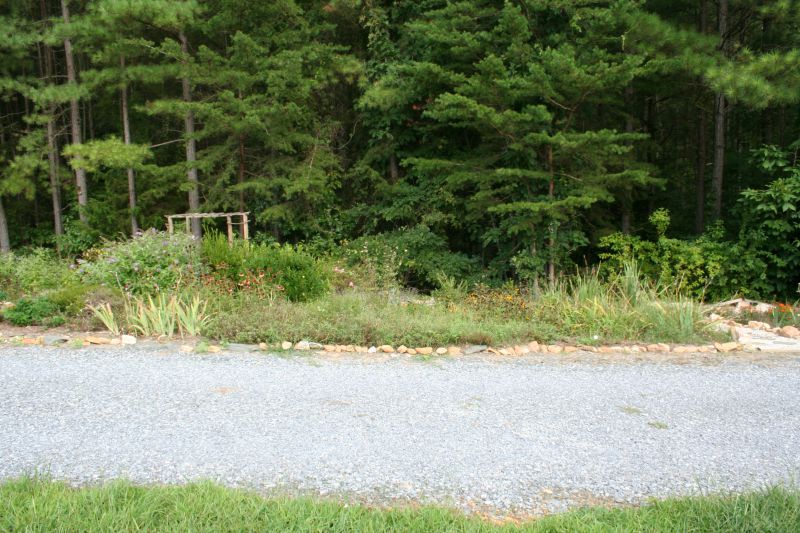
Can you say blah? This is the area I decided to renovate. The center section was just choked with weeds and invasive Missouri primrose.
I have to say that although the crabgrass and brambles weren’t my fault, the Missouri primrose was. I knew I wanted to grow Missouri primrose, but unfortunately I picked the wrong variety. The pink flowers in the spring are lovely, but the rest of the year it looks like a weedy mess. It wouldn’t be bad growing on a bank or hillside where nothing else grows, but in my flower garden, it doesn’t do anything but make it look messy.
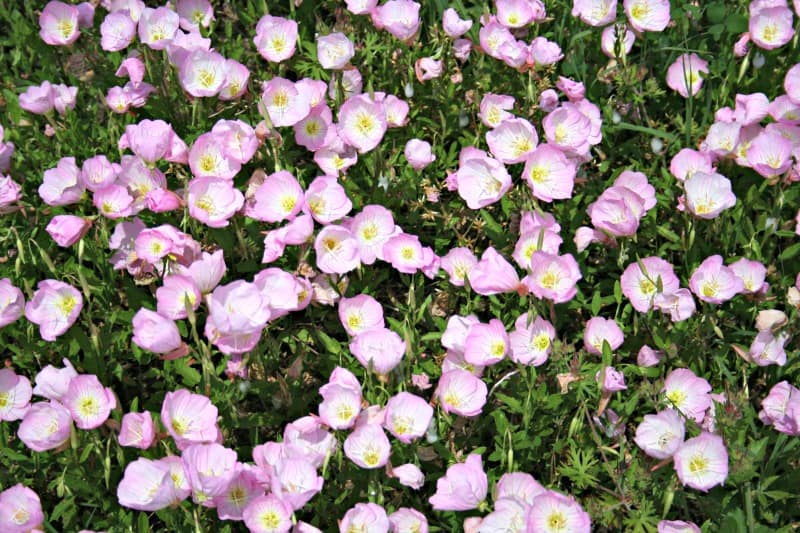
For about two weeks in spring, I like Missouri primrose. Then the rest of the year I hate it. It’s got to go.
Armed with my trusty new CobraHead weeding tool, my floppy straw gardening hat, my Honey Badger gardening gloves, a pick axe and a wheelbarrow, I began weeding.
And weeding.
It took me three hours to clear an area approximately five feet by five feet, or 25 feet square, of all the weeds. The crabgrass was ridiculous. The CobraHead weeding tool is excellent at getting most weeds up, but the ground was so hard from lack of rain that it was like weeding a brickyard. I ended up using a pick axe to weed!
I found three aster plants marked down at Lowe’s for just $3 each. I decided to add fall color to this flower garden renovation to ensure that there would be some color in this area of the garden late in the season. Most of my garden blooms April through June, with few plants blooming later in the year. One of my goals for 2016 is to renovate the flower beds so that they are clean, neat, and have a variety of plants blooming at all times. The asters should help with that.
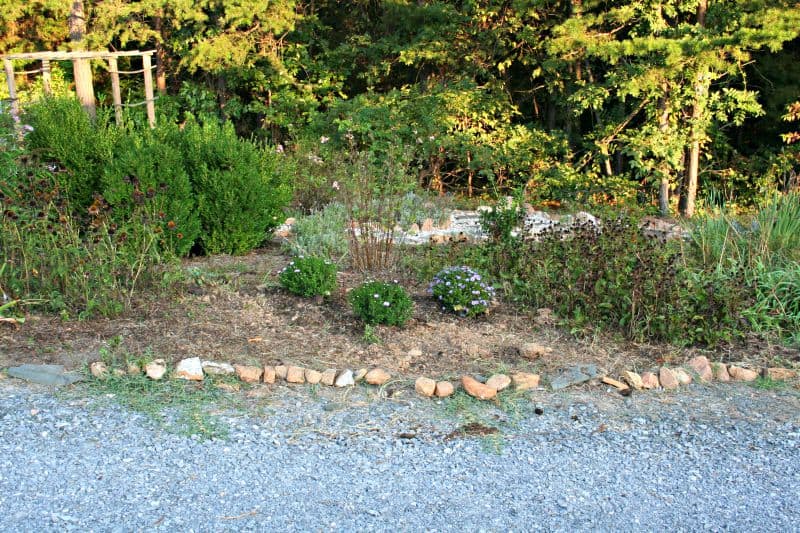
After – the flower garden renovation. The area is now free from weeds. I added plenty of compost, and planted three asters for fall blooms.
How to Grow Asters
Asters are fall-blooming flowers that prefer cool, moist summers. They’re going to be difficult to grow in my garden because we tend to have hot, dry summers in Virginia. Because I know that they prefer cool, moist conditions, I’m committing to watering them daily. I will also add plenty of mulch around the plants to keep the roots cool and moist.
If the plants survive, they will also attract butterflies, which I love to do. My garden has a butterfly gardening area, but I’m gradually adding butterfly-attracting plants throughout the garden so that the whole area will attract and nurture pollinators.
Asters are perennials, which means that they return from the roots each year and should grow larger if they’re happy with the spot. They can be divided after several years.
So far, so good. I like the renovations and hope to add more spring-flowering bulbs to the garden as well as late-summer bloomers and annuals to this part of the garden next year. The area to the far right needs weeding, and the day lilies and iris need to be divided, but that will have to wait until fall, when both can be divided safely.
More Flower Gardening Articles
If you enjoyed this article, you may also enjoy:
